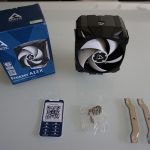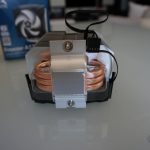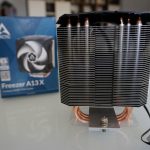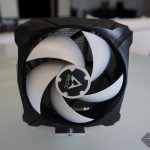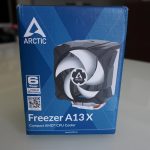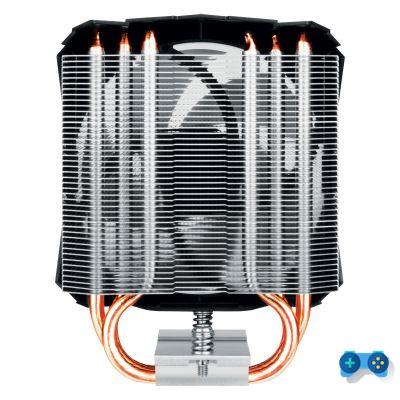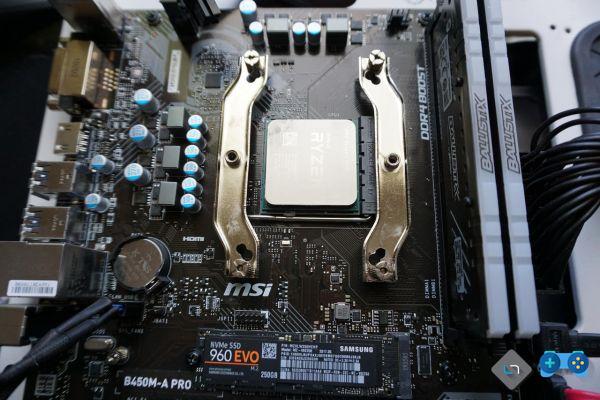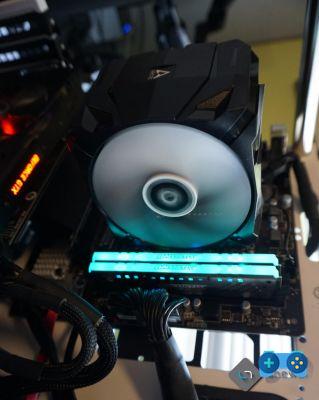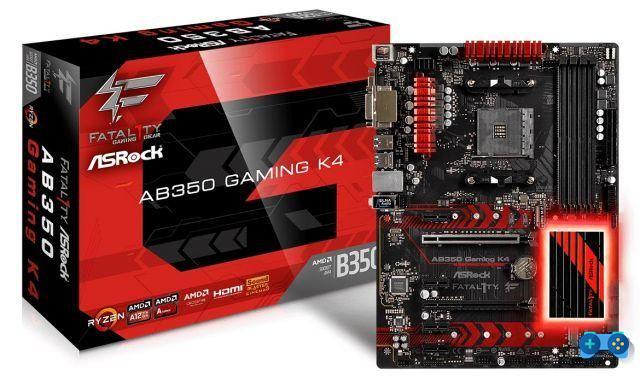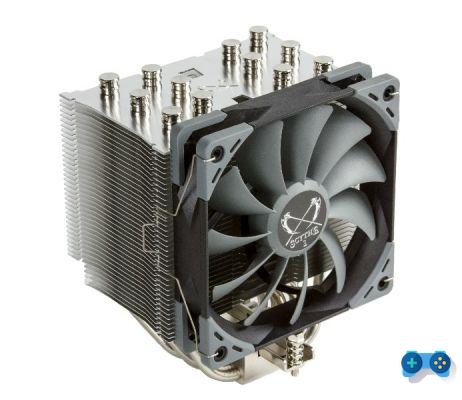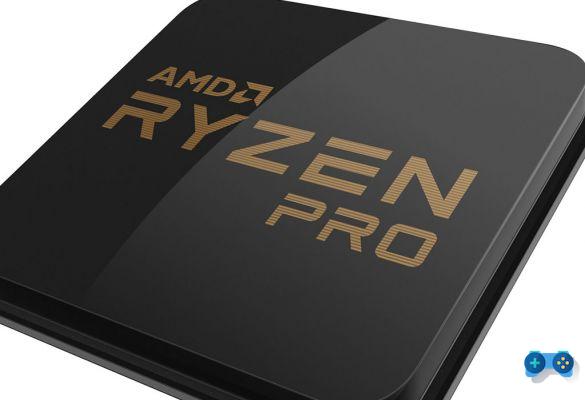Small but powerful
AMD processors have now revolutionized the PC market. The merit is mainly due to excellent performance - both from the point of view of performance and from the thermal point of view - and to a very aggressive price policy in all market segments, from the lowest one, where the Ryzen 3300x is considered the best option for those who want to build a budget gaming PC, up to 3900x, to date the absolutely recommended solution for a high-end computer, finally passing through the Ryzen 5 3600 and the 3600x which at the moment represent our favorite solutions for a great value for money gaming PC.
Another great merit of AMD solutions is to offer with its CPUs, generally good standard heatsinks: like the Wraith Prism, the Wraith Spire and the Wraith Max. Curiously though, right on one of the most interesting processors of the AMD range , the Ryzen 3600, AMD has decided to mount a very spartan heatsink, the Wraith Stealth, whose performance considering the capabilities of the AMD processor are really insufficient.
Probably just thinking of those who are assembling a new PC with an AMD Ryzen 5 3600 solution, Arctic, the German-based Swiss company that makes some of the coolest CPU cooling solutions like the award-winning Arctic Liquid Freezer, has engineered its new Arctic Freezer A13x, heatsinks designed to replace AMD's standard solutions, offering excellent thermal performance compared to standard solutions and at an extremely low price that is around 23 euros on Amazon.
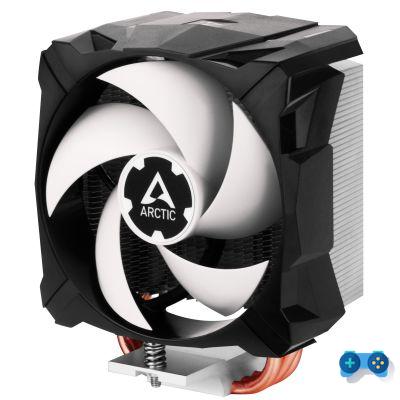
Thermal design and package contents
The new Freezer 13x heatsinks have a very compact design, with a 92mm fan mounted in a black plastic structure that allows it to be hooked up and released from the radiator very quickly. The dimensions in this way are very small, just measuring everything X x 109 137 86 mm, for a weight 443 gram. The fan has a rotation speed ranging from 300 to 2000 revolutions per minute, while the radiator is equipped with 44 fins and 3 heat pipes of 6mm each in direct contact.
The latter figure would seem a step back from the previous Freezer 13 series, which featured a radiator with three 8mm heatpipes and a 45-fin radiator, but Arctic engineers believe that the improved radiator engineering and above all the new high fan static pressure, guarantee better performance up to 5% compared to the Freezer 13, and with an even smaller footprint than the latter.
Furthermore, the supplied fan is directly inspired by Arctic's P-series, whose qualities are widely recognized among enthusiasts. Also in this case, in fact, we have a dynamic fluid bearing fan, with high static pressure and specifically designed for radiators.
The Freezer A13x were designed for a TDP of up to 150w (although the TDP concept itself is somewhat questionable), and therefore more than enough to handle the thrifty Ryzen 3600 used for testing. Thermal paste, an Arctic MX-2, is pre-applied as standard for even faster assembly.
The package is minimal and contains the heatsink with the fan already attached, the mounting bracket to the AMD socket with the relative screws (the heatsink tested is a specific version for AMD, the version for Intel socket is called Freezer i13x) and the classic Arctic card with a QR code that is used to download the instruction manual for assembly in different languages.
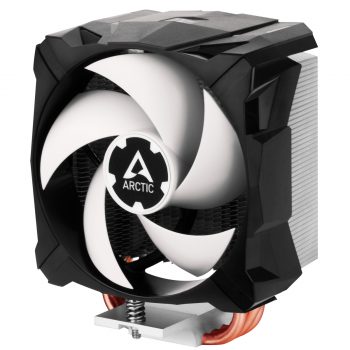
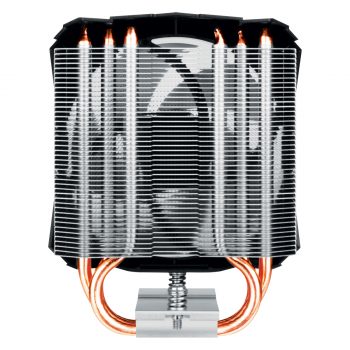
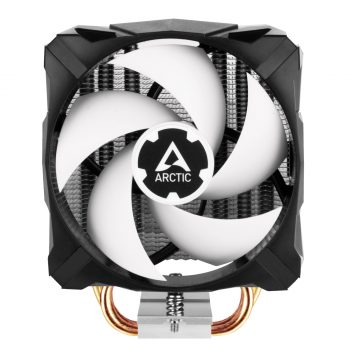
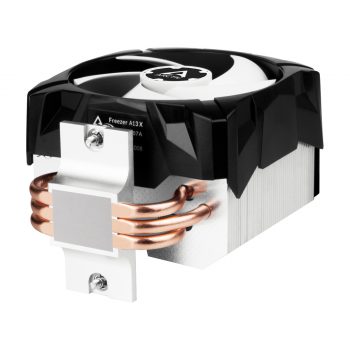
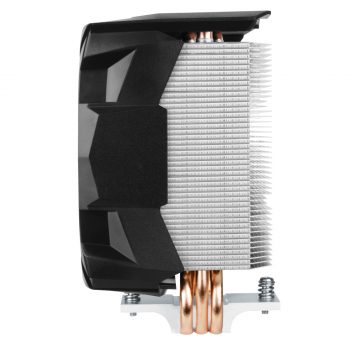
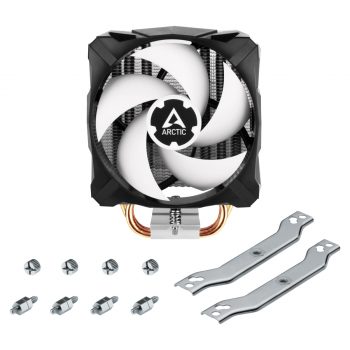
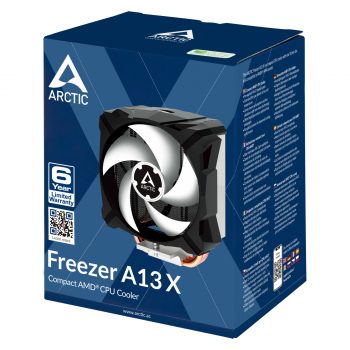
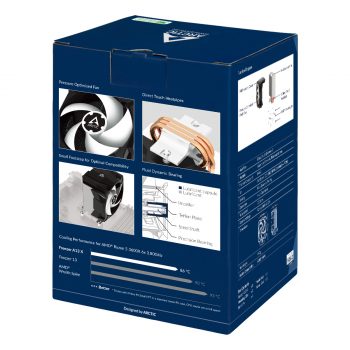
mounting
Assembly is very simple if you take care to follow the instructions in the digital manual. The bracket consists of two simple brackets to be connected to the plate supplied with the AMD motherboards, using the four double-profile screws supplied. Once secured, make sure of the direction of the fan's airflow (it is always recommended that the fan push air through the heatsink and into the exhaust fan on the back of your case). Once this is done, all you have to do is fix the heatsink to the socket. The Freezer A13x is equipped with two spring screws already fixed to the heatsink structure, once screwed proceeding, as always, "cross", you are ready to start your PC. The whole operation shouldn't take more than ten minutes.
Test machine and test explanation
For the test of the heatsink in question, as mentioned above, we have chosen to use the cpu Ryzen 5 3600. The processor has a TDP of 65w (the TDP is a purely marketing value but it can still give us a very general and simplified idea of the thermal performance of the processor) and a performance very similar to that of the 3600x which, despite the 95w TDP and the 200mhz difference in base and boost clock, it has only 5% higher performance. The Ryzen 3600 is therefore the solution we recommend for a gaming build, considering that the approximately 50 euros less than the 3600x solution can be invested in other components, such as a better GPU.
For our test, Arctic's cooler was compared with both AMD's stock solution, the Wraith Stealth, and Arctic's top-of-the-line solution, the Liquid Freezer 240mm. The case used is Thermaltake's Core P3, an open frame used to prevent the heatsink performance from being affected by other factors, such as imperfect air circulation inside the closed case.
The other specifications of the test machine can be found below
| CPU | Ryzen 5 3600 - stock |
| Motheboard | MSI B450m-A Pro |
| RAM | 16gb 3000mhz Corsair Ballistic Tactical tracer RGB |
| SSD | HyperX Savage 256gb |
| PSU | Corsair RMi 750 |
| Case Open Frame | ThermalTake Core P3 |
The temperature was controlled by an air conditioning system and set at 24 ° c.
The tests were carried out three times, always at a stock clock frequency, considering that the heatsink in question is not intended for geeks and overclockers. The software used are OcCT “Small data set” mode e Prime95 “Small FFTs” mode, for about 1h for each single test cycle, with a 15-minute break between them. The two programs offer the greatest load on the CPU and are therefore excellent tools for evaluating the quality of the dissipation solutions. As for the in-game thermal test, we used Time spy di 3dMark, which offers a decent CPU load and a good overview of in-game performance. All heatsinks have been tested with Arctic MX-4 thermal paste, thus also replacing the standard one present on the Freezer A13x.
Test results
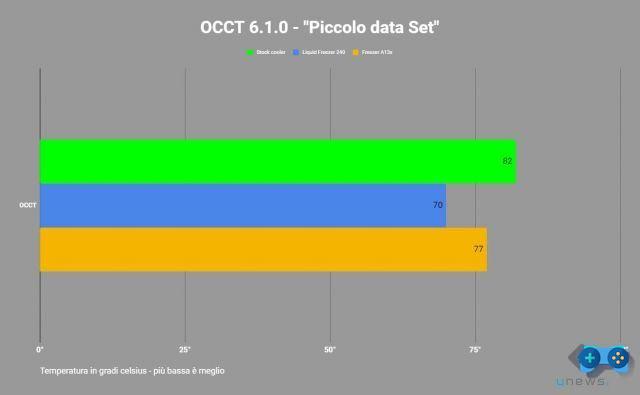
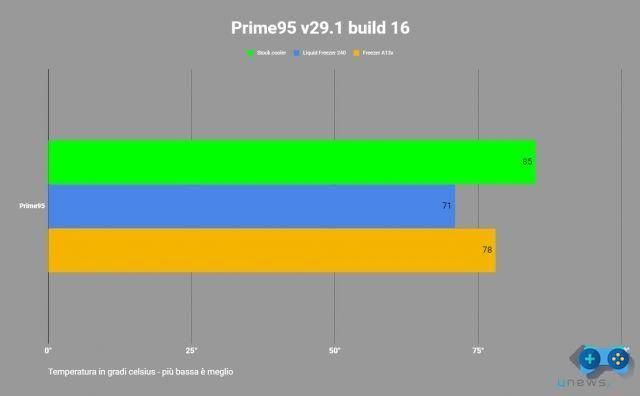

As you can see from the graphs above, in all three tests our Arctic Freezer A13x performs very well, certainly much better than the standard solution integrated in our Ryzen 5 3600, making it an absolutely recommended upgrade. To want to find some defect in the small Arctic heatsink we cannot fail to mention a certain noise when in full load. The 92 mm fan if at low rpm is practically inaudible, at the maximum rotation speed of 2000 RPM it becomes much noisier especially in an open case like the one used for the test. Things get better in a closed case and are still better than the stock solution, but it's certainly not a dead silent solution if that's what you're looking for. Fortunately, the tone is quite low and is not particularly annoying.

Conclusions and judgment.
THEArctic Freezer A13x is a recommended upgrade for all Ryzen family processors equipped with a Wraith Stealth series heatsink; the compact size, the excellent cooling qualities and the very affordable price, in fact, make it perfect for a configuration that minds the substance and can do without overclocking. With the AMD Ryzen 5 3600 CPU that despite having performance only slightly lower than the 3600x uses a modest Wraith Stealth instead of the Wraith Spire used in the 3600x, the upgrade to Arctic Freezer A13x makes a lot of sense and indeed, at just over 20 euros on Amazon , is one of the purchases we recommend in your mid-tier build.









